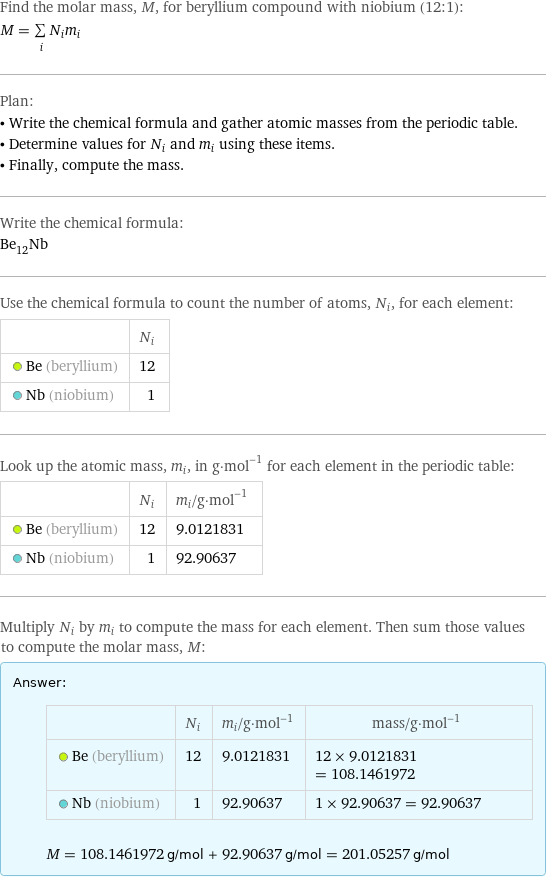Input interpretation

beryllium compound with niobium (12:1) | molar mass
Result

Find the molar mass, M, for beryllium compound with niobium (12:1): M = sum _iN_im_i Plan: • Write the chemical formula and gather atomic masses from the periodic table. • Determine values for N_i and m_i using these items. • Finally, compute the mass. Write the chemical formula: Be_12Nb Use the chemical formula to count the number of atoms, N_i, for each element: | N_i Be (beryllium) | 12 Nb (niobium) | 1 Look up the atomic mass, m_i, in g·mol^(-1) for each element in the periodic table: | N_i | m_i/g·mol^(-1) Be (beryllium) | 12 | 9.0121831 Nb (niobium) | 1 | 92.90637 Multiply N_i by m_i to compute the mass for each element. Then sum those values to compute the molar mass, M: Answer: | | | N_i | m_i/g·mol^(-1) | mass/g·mol^(-1) Be (beryllium) | 12 | 9.0121831 | 12 × 9.0121831 = 108.1461972 Nb (niobium) | 1 | 92.90637 | 1 × 92.90637 = 92.90637 M = 108.1461972 g/mol + 92.90637 g/mol = 201.05257 g/mol
Unit conversion

0.2010526 kg/mol (kilograms per mole)
Comparisons

≈ 0.28 × molar mass of fullerene ( ≈ 721 g/mol )

≈ molar mass of caffeine ( ≈ 194 g/mol )

≈ 3.4 × molar mass of sodium chloride ( ≈ 58 g/mol )
Corresponding quantities

Mass of a molecule m from m = M/N_A: | 3.3×10^-22 grams | 3.3×10^-25 kg (kilograms) | 201 u (unified atomic mass units) | 201 Da (daltons)

Relative molecular mass M_r from M_r = M_u/M: | 201